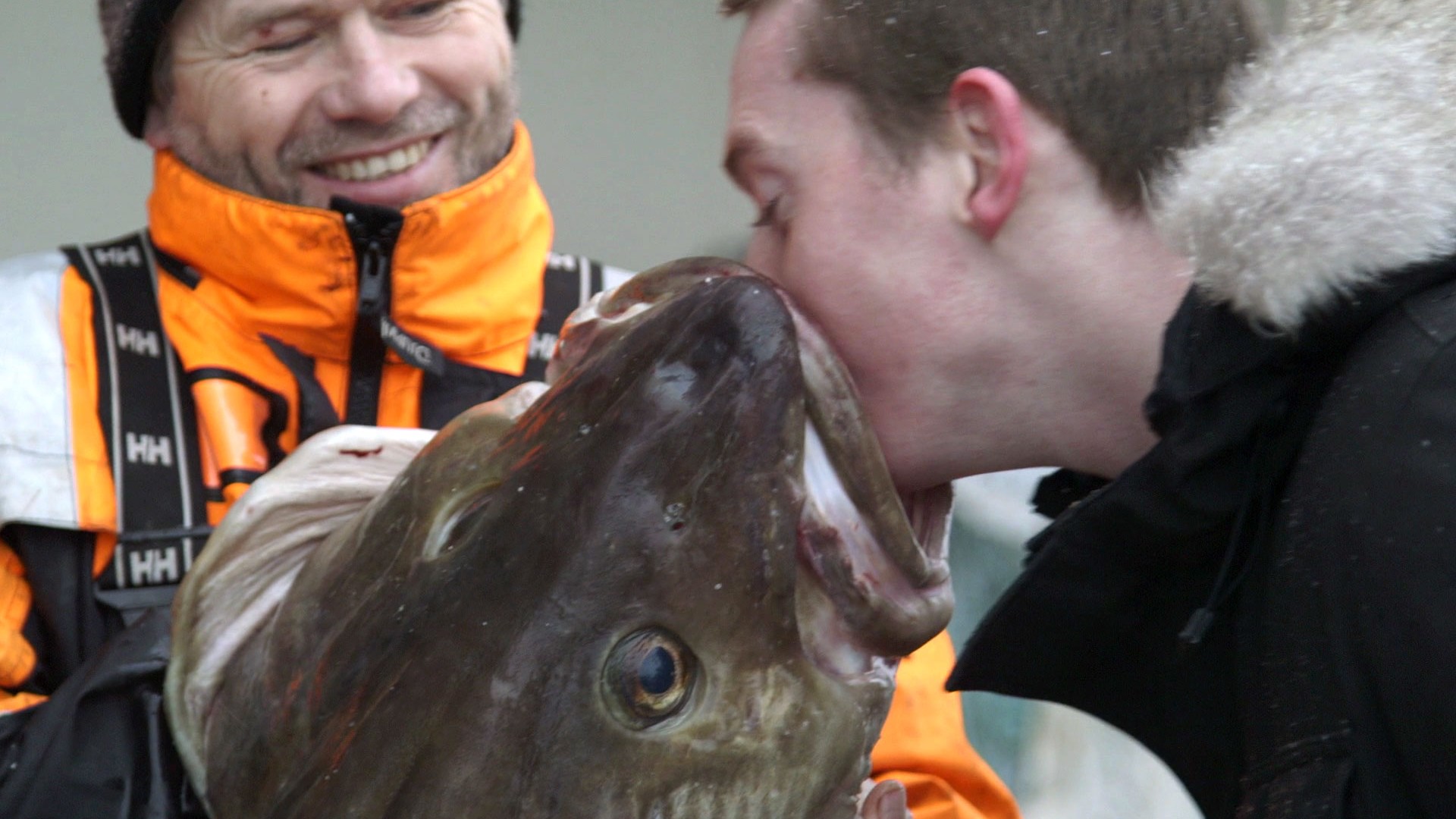A selection of surströmming tins. Photo by the author.
Your burps and farts the day after a surströmming feast will have an extraterrestrial quality to them.
As the tins are opened, the smell is unescapable—and to the initiated, quite delightful. Photo by Anna Madberg.
WATCH: MUNCHIES Guide to Norway: Champion Cod and Deep Dives

At my sister's house in Stockholm, we've invited people over for a surströmmingsskiva. There's excitement in the air. As Lisa opens the tins, a grey liquid spurts out, as if a fishy beast is trying to escape it. Everyone's gathered around, waiting for that smell to hit—and when it does, it's glorious. Nothing evokes memories like smell, and I think everyone is instantly transported to their own private surströmming past. All but two of the guests are from Northern Sweden and have eaten surströmming since they were kids.
Before the tins of herring are opened, Hanna opens a bottle of beer with a box of snus, or Swedish tobacco. Photo by Anna Madberg.
Indeed, most Swedes know better than to open a can at an inappropriate time. Surströmming is typically saved for August, when the catch from early spring hit the shops.And the signs have popped up when surströmming has been taken out its natural habitat. Several airlines, including British Airways and Air France, have deemed the bulging surströmmings tins unsafe to take on planes, due to their risk of explosion.But it's not as if Swedish people like to torture themselves, as if they're practicing some sort of culinary BDSM. Lundgren explains that the first thing to understand about surströmming is that its overwhelming flavour is a cultural one. "NOBODY appreciates surströmming from birth," she says. "It's a taste that takes time to learn how to appreciate, and requires certain condiments and ceremonial arrangements."Several airlines, including British Airways and Air France, have deemed the bulging surströmmings tins unsafe to take on planes, due to their risk of explosion.
A fat fermented herring fresh from the tin. To balance the sharp taste, the right condiments are needed. Photo by Anna Madberg.
And what of those videos on YouTube? "It's no exaggeration to claim that surströmming is the most overwhelming taste in Swedish food culture," Lundgren admits. "[But] surströmming has been eaten in Sweden for 500 years. The Northern Swede who eats surströmming is not eating fermented canned herring—she is connecting with her origin through her mouth."An there we have it. As a Swede, I haven't been raised to cry if someone pisses on the Swedish flag, if someone offends a God, or if a politician refuses to sing the national anthem. But the old food traditions of Sweden are as close as we get to the sacred. Eating surströmming is a way for Swedes to connect with their past, present, and future in a way that religion can't do for us anymore. These stinky fish become a sort of Jesus for us.Back at the party, Hannes from Frankfurt is digging into a surströmmingklämma. He only started eating surströmming a couple of years back. He tells me his first experience with the fish was dramatic, as the dangerously bulging tin exploded everywhere when he opened it—nothing was left inside and he had to peel the fish off the walls. Many surströmming parties later, he is now a connoisseur.Eating surströmming is a way for Swedes to connect with their past, present, and future in a way that religion can't do for us anymore. These stinky fish become a sort of Jesus for us.
Simon tastes surströmming for the first time. Photo by the author.
Hanna is from Jämtland and has fond memories of eating surströmming. "When I was little and surströmming season came, everyone was having surströmming parties in their garages—kids running around, everyone partying," she tells me. "You would cycle past and see it in almost every garage, smell it in the air around the whole village. Then that disappeared and we all moved away … but we have continued to have these parties in Stockholm and I'm sure we will continue to have them for years to come. Even when we're senile, I hope."Hanna agrees that opening a tin with the mindset that it's going to be horrific would definitely be an unpleasant experience. Just as you shouldn't try LSD for the first time in a scary alleyway, surströmming also has to be taken in the right setting, with the right mindset, and with the right people."If you can enjoy the taste of an old aged blue cheese, you can absolutely appreciate surströmming, too," Hanna says.Just as you shouldn't try LSD for the first time in a scary alleyway, surströmming also has to be taken in the right setting, with the right mindset, and with the right people.
Emma, Lisa, and Hanna raise their glasses after a snapsvisa. It's customary for plenty of snaps to be taken at a surströmming party. Photo by Anna Madberg.